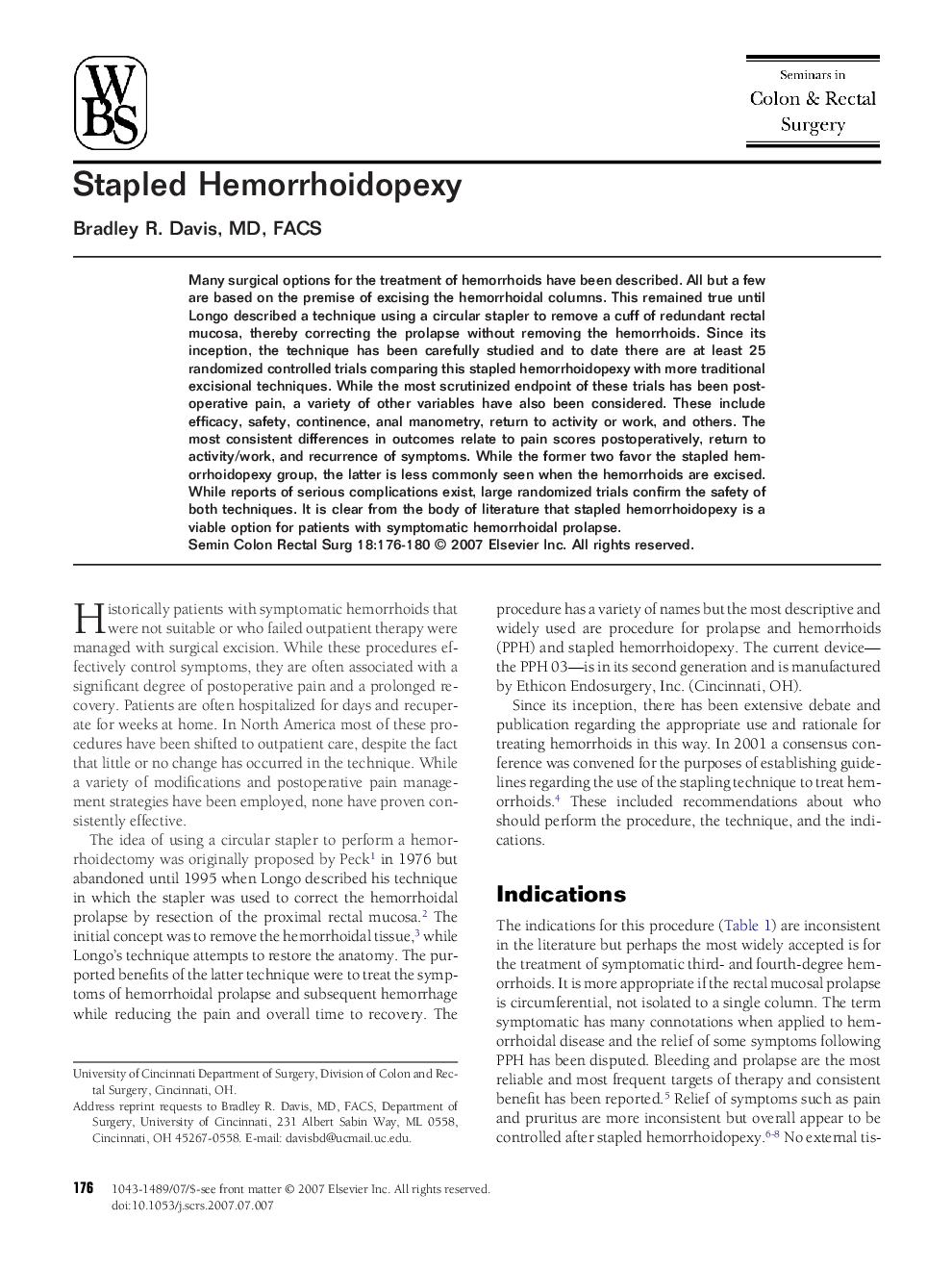| Article ID | Journal | Published Year | Pages | File Type |
|---|---|---|---|---|
| 3319681 | Seminars in Colon and Rectal Surgery | 2007 | 5 Pages |
Many surgical options for the treatment of hemorrhoids have been described. All but a few are based on the premise of excising the hemorrhoidal columns. This remained true until Longo described a technique using a circular stapler to remove a cuff of redundant rectal mucosa, thereby correcting the prolapse without removing the hemorrhoids. Since its inception, the technique has been carefully studied and to date there are at least 25 randomized controlled trials comparing this stapled hemorrhoidopexy with more traditional excisional techniques. While the most scrutinized endpoint of these trials has been postoperative pain, a variety of other variables have also been considered. These include efficacy, safety, continence, anal manometry, return to activity or work, and others. The most consistent differences in outcomes relate to pain scores postoperatively, return to activity/work, and recurrence of symptoms. While the former two favor the stapled hemorrhoidopexy group, the latter is less commonly seen when the hemorrhoids are excised. While reports of serious complications exist, large randomized trials confirm the safety of both techniques. It is clear from the body of literature that stapled hemorrhoidopexy is a viable option for patients with symptomatic hemorrhoidal prolapse.
